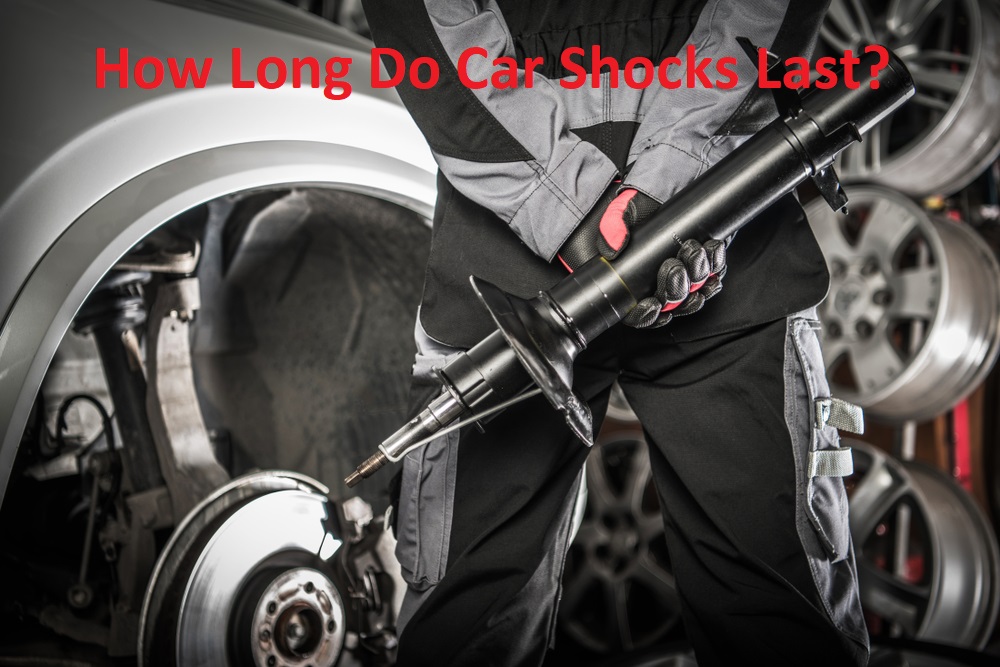If you are looking for shock replacements on the market, you either have to get monotube or twin-tube shocks. Monotube vs. twin-tube is a comprehensive comparison, and the one that suits your car depends on several factors.
If you are having trouble deciding, you are not alone. Without thorough research and talking to someone, it can get hectic to find the difference between the two. More importantly, you can have a difficult time understanding why the differences matter.
In this article, I have written down all the information based on thorough research and practical knowledge of shock absorbers. If you read this by heart and as an enthusiast, you will know what to go for by the end. Let’s get right into it!
The Structural Differences Between Monotube and Twin Tube
I will be starting with the structural differences between monotube vs. twin-tube shock absorbers. Now you might have seen the structural difference in diagrams or pictures.
However, simply seeing the differences cannot tell you what they stand for. So, let’s begin with a structural difference explanation that will answer all your questions about monotube vs. twin-tube.

As you can see in the diagram, the primary difference between monotube vs. twin-tube is the number of tubes used for the shock absorber.
A monotube shock absorber is made out of a single tube. This single tube houses all the significant components, including the gas, piston valve, oil, etc.
On the other hand, a twin-tube shock absorber has an outer shell and a separate cylinder inside the shell. This makes it a two-tube shock absorber, which also gives it the name “twin-tube.” The piston valve is located inside the second tube, or the inner cylinder, in a twin-tube shock absorber.
Apart from the main structural difference, monotube vs. twin-tube have other differences in construction as well. For instance, a monotube absorber completely separates the gas chamber from the oil chamber using a free piston.
On the other hand, in a twin-tube absorber, the addition of the second cylinder removes the need to separate the gas and oil chambers. As a result, there is no free piston in a twin-tube absorber. The main piston valve and the two tubes help separate the gas and oil. Instead, it has a base valve.
As you can see, other structural differences in monotube vs. twin-tube are also driven by the primary structural difference, i.e., differences in the number of tubes. This primary leads to differences in the inner mechanisms of both the shock absorbers.
Important Note: Most people think that the two-tube design of a twin-tube shock absorber makes it better than a monotube shock absorber. This is not the case at all. Both perform exceptionally well in the conditions they are made for.
More importantly, the performance also depends on the make and quality of the shock absorber.
Monotube Shock Absorbers-Pros & Cons

Now that we know the structural differences between monotube vs. twin-tube, it is time to discuss their pros and cons. Let’s begin with the monotube:
Pros:
- A monotube absorber efficient heat dissipation and larger oil capacity allows for a more stable and consistent damping force generation.
- The primary piston valve has the ability to create a broader area to receive pressure. As a result, the absorber can even handle subtle bumps that need precise and quick damping force action.
- The single tube structure has no limits on installation angles.
- With an increase in temperature, the oil is able to dissipate heat more efficiently and easily.
- Due to the complete separation of gas and oil, aeration does not occur.
Cons:
- Due to the serial position of the gas and oil chambers, monotube shock absorbers struggle to maintain sufficient stroke.
- Monotube shock absorbers also make the ride feel a bit stiffer. This occurs because the damping mechanism inside requires an injection of high-pressure gas.
- The high-pressure gas on the inside causes greater stress levels on the seals, which results in bigger or longer-lasting friction.
- If used at an inverted angle, the friction tends to be greater because of the more moving parts.
- The single tube structure makes the inner cylinder more prone to damage.
Twin-Tube Shock Absorbers-Pros & Cons

Now let’s separately go through the pros and cons of a twin-tube shock absorber:
Pros:
- A twin-tube shock absorber is more efficient at securing sufficient stroke due to separate gas and oil chambers and their nonserial positions.
- It allows for a more comfortable ride thanks to the base valve that helps keep the gas pressure low.
- Friction is kept low due to low gas pressure, which helps avoid excessive stress on the seals.
- Any damage to the outer shell case poses no threat to the inside components due to the twin-tube structure.
- Lower productions costs and hence the prices due to superiors manufacturing processes
Cons:
- Smaller oil capacity as compared to a monotube shock absorber.
- The piston valve is also smaller in size as compared to a monotube shock absorber.
- Due to the design of the structure, there are limits to the installation angles.
- Aeration is possible due to no separation between the gas and oil chambers.
Monotube Shocks vs Twin Tube Shocks: Performance Comparison
Getting familiar with the structural differences and pros and cons of each type was the first step. It is now time to understand in detail how each performs. Here are some of the most vital factors one should consider when getting new shock absorbers:
Also read: Nitro Shocks vs. Hydro Shocks
Ride Quality
Ride quality is one of the first things people consider when deciding which type of shock to get. The shock’s ability to perform the main function of damping the effects of bumps and dips determines the ride quality. When it comes to monotube vs. twin-tube, they both accomplish this task quite differently.
Monotube shock absorbers are able to provide reliable and stable support for your vehicle. This happens due to the separation of both gas and oil in the single-chamber that contains them. Since the free piston never lets the gas and oil mix together, stability is one of the strongest suits of the monotube shock absorber.
As for twin-tube shocks, the difference in structure means they work differently as well. The duo chamber structure means there is a separate chamber for gas and oil. As the ride goes through bumps or dips, the shock comes under pressure.
This pressure causes the fluid to flow between the two chambers to generate the damping effect. As a result, twin-tube shock absorbers can take bumps quite efficiently.
However, one drawback of twin-tube shock absorbers is foaming. This can happen if the vehicle approaches the jolts on the road at high speeds. The heavy impact can cause the fluid and gas to mix, causing foaming. This can significantly bring down ride quality.

Responsiveness
The next important factor you must consider when getting new shocks is responsiveness. It basically shows how quick and efficient the shock is at adjusting to the road conditions. The ideal shock must keep the suspension stiff on rough surfaces and gentle when the vehicle is on smooth road surfaces.
Twin-tube shock absorbers are able to adjust to road conditions with the help of multiple valve pistons that work independently inside them. On the other hand, monotube shock absorbers make the same adjustments but with a single valve assembly.
As a result, monotube shocks are able to equally distribute the pressure throughout the shock. In this way, no particular area has to experience excessive stress. More importantly, the larger circumference of monotube shocks allows them to spread the load, even more, enhancing responsiveness.
The monotube shock absorbers’ single unit design allows it to perform better when it comes to responsiveness. This is one of the major reasons why many people switch to monotube from twin tubes.
Damping Stability
The more stable the damping force, the higher the quality of the ride. Excellence damping force stability also reflects great responsiveness of the shock. Damping stability is achieved when the pressure on the shock is evenly distributed throughout the shock.
As discussed above, monotube shocks are able to do this distribution better than their twin tube counterparts. Taking this into light, let’s see how monotube surpasses twin-tube in this realm as well:
- The single valve unit helps achieve an equal distribution of pressure. The multiple valve system on one piston in twin-tube absorbers cannot achieve this even distribution.
- The width of the piston also helps achieve greater damping stability. Monotube absorbers have a piston with a greater width as compared to twin tube absorbers.
- Monotubes have better heat dissipation thanks to their larger oil capacity as compared to twin-tube shock absorbers.
- The free-piston in monotube shocks keeps the gas and oil from mixing. As a result of this, the shock is able to produce more precise damping. The same is not the case for twin tubes, as there is a risk of gas and oil mixing due to their design and structure.
Ease of Installation

While you may think otherwise, ease of installation is a crucial factor when looking for shock absorbers. This is especially true for those who wish to install the shocks on their own. However, if you are hiring a professional to install the shocks, an easier installation can save you a lot of money.
Even in this scenario, monotube shocks are a better choice as their design and structure allow for an easier installation. The single-assembly shell design is home to all the important components and allows for a lot of flexibility. On the other hand, twin-tube shock absorbers can be a hassle to install. Even the slightest misalignment can lead to poorly performing shocks.
Aeration
Aeration is one of the biggest hindrances to shocks. Given how shocks contain gas and oil, there is always a risk of the two mixing together. When this mixing happens, it is called aeration. When this mixing happens, the shocks suffer in the same manner as brake lines do when they get air bubbles.
As a result of aeration, the shocks start to lose their damping abilities and perform poorly. The situation gets so bad that it leads to fading as well, especially after driving in rough terrain.
Now, coming to the monotube vs. twin-tube debate, once again, the monotube takes the lead. Given the design and structure of twin-tube shocks, there is a high risk of the gas and oil mixing together due to no separation. As for monotube shocks, they have separate chambers for both oil and gas. More importantly, the free valve keeps the two from mixing together.
You will see that the newer twin-tube shock absorbers contain nitrogen instead of oxygen, which is more effective. However, monotube absorbers are still better in this case.
Fading
Last but not least, fading is another common problem that causes problems for the shocks as well as the whole suspension. Fading occurs when the constant pressure on shocks leads to depreciating performance. This is either caused by heat that expands the chamber or when the liquid develops air bubbles and leads to foaming.
Once again, twin-tube shocks are more prone to fading than monotubes. And this is not without reason. Instead, there are several reasons for this, which include:
- Smaller piston surface area.
- Smaller oil capacity.
- No separation for oil and gas.
On the other hand, monotube shocks have a larger piston surface area, bigger oil capacity, and separate chambers for oil and gas. All of these factors combined help the monotube absorber to lessen fading.
Monotube vs Twintube Shock Absorbers? Which One Is a Better Choice for My Car?
Having read everything above, you must be thinking that a monotube absolutely crushes a twin-tube shock in comparison. If you ask me, I would agree. However, there are some things that you must know before making this decision.
While a monotube shock does have a larger oil capacity, better heat dissipation, and more stability, all of this does come at a high cost. Is it actually worth the extra cost? Yes, definitely yes. But again, the main concern here is what you can make of the benefits that come with a monotube shock.
If you are someone who is always driving on straight streets with little to no bumpy rides, a twin-tube can do the job just fine. More importantly, it won’t cost you much either. However, if you are doing a lot of off-roading, a monotube can offer a better ride experience. It is not to say that there are no good twin-tube off-road shocks. There are, but monotube surpasses them in performance and everything else.





